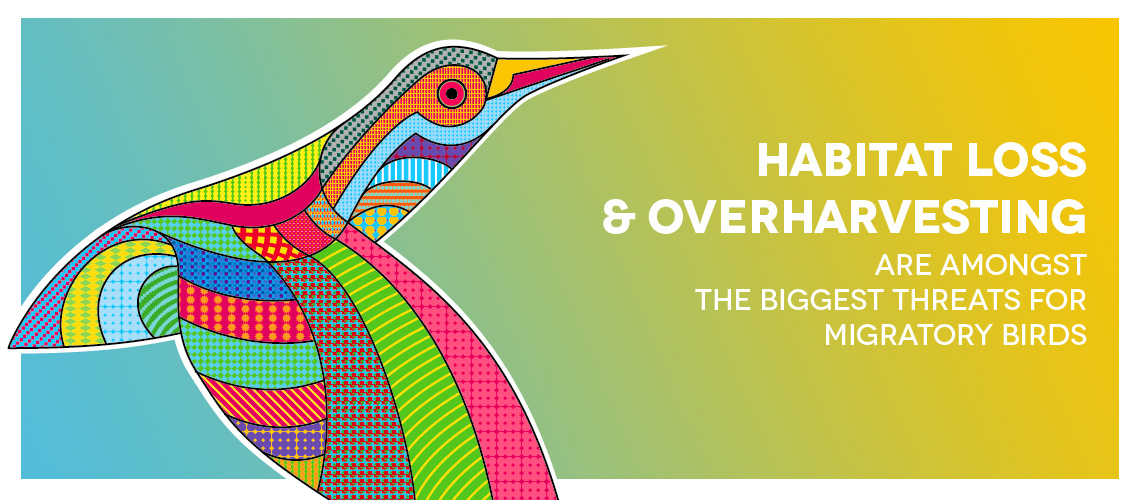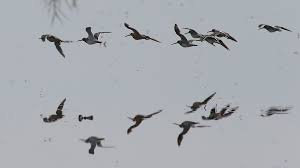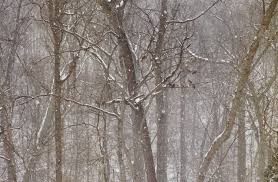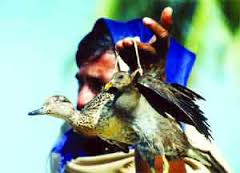
Migration is a perilous voyage, yet those risks are frequently ignored in the expansive scale scene of a huge number of winged animals that effectively go between their reproducing and wintering grounds every year. Birders who comprehend the dangers moving winged animals confront, be that as it may, can enable those fowls to be better prepared for an effective flight. Regardless of whether their relocation is only a couple of hundred miles or to the extent a couple of thousand, each winged animal merits the opportunity to achieve their goal securely.
👉Migration Threats
Distinctive winged creatures confront diverse dangers along their excursions, however all feathered creatures need to persevere through a few dangers as they relocate. The most widely recognized and most fatal dangers to moving flying creatures incorporate...
👉Depletion
.jpg)
Fowls fly several miles amid relocation, frequently covering extensive separations without rest. Depletion can make winged creatures less careful about potential dangers, and tired feathered creatures are more well-suited to crash into impediments or flounder in flight. This is particularly valid if their flight way goes through tempests or troublesome breeze designs, or if winged creatures are moving later in the season and should make more progress every day to achieve their goal.
👉Starvation
Lacking sustenance supplies cause starvation among relocating fowls each year. This might be caused by living space pulverization that viably strands moving feathered creatures without sustenance along their course, or it can be because of more prominent nourishing rivalry among extensive groups of transitory winged animals.
👉Impacts
.jpg)
A huge number of relocating winged creatures slam into deterrents in mid-flight amid both spring and fall movements, and the greater part of these crashes cause lethal wounds. Regardless of the possibility that the flying creatures are not executed on affect, staggered fowls are more helpless to predators. The most well-known deterrents that are dangerous to moving fowls incorporate tall glass structures, electrical wires and shafts, wind turbines and comparable structures.
👉Predators
Predators execute a huge number of flying creatures every year, and amid relocation, moving feathered creatures might be unconscious of neighborhood predators at stopovers amid their trip. Open air felines and non domesticated felines are the most widely recognized predators that undermine relocating feathered creatures, however even wild predators can be a dangerous peril.
👉Ailment
.jpg)
While relocating feathered creatures accumulate in expansive groups, an infection episode can be annihilating. This can be considerably more impeding while surviving winged creatures convey the disease to either reproducing grounds or thickly populated winter ranges. In those substantial groups, more winged animals may end up plainly tainted and the general populace can be obliterated.
👉Contamination
.jpg)
Contamination, for example, lead harming or oil slicks is destructive to privately influenced winged creatures, as well as to transitory fowls too. Dirtied living spaces give less nourishment, and winged creatures that ingest poisons amid movement may keep on suffering from the toxic impacts longer subsequent to leaving the zone. Moreover, overwhelming contamination will lessen accessible nourishment supplies and reasonable territory, making it more troublesome for winged animals to finish their movement effectively.
👉Catastrophic events
.jpg)
Tropical storms, snowstorms, rapidly spreading fires and other catastrophic events can crush urgent stopover and rest locales and in addition decimating sustenance sources flying creatures need to refuel along their trips. Winged animals that are gotten in these debacles can endure different impacts that reason damage, crippling or passing, for example, scorched quills in a rapidly spreading fire or solidifying in an early or late snowstorm.
👉Chasing
.jpg)
Many chasing seasons agree with relocation periods, making this unsafe time much all the more undermining for flying creatures. Illicit chasing and poaching are additionally a danger as of now. Indeed, even authentic, experienced seekers may commit errors and accidentally shoot secured feathered creatures that they have misidentified in flight.
👉Inability
A fowl's own inability with relocation can be an extraordinary danger to its prosperity and survival. Numerous adolescent feathered creatures make these long adventures without direction from grown-ups. They will most likely be unable to finish the outing on the off chance that they are unsuccessful in finding satisfactory sustenance or on the off chance that they stray too a long way from the regular movement course. While birders may appreciate the vagrant sightings of unpracticed adolescents amid movement, straying distant course is likely a capital punishment for the feathered creature.
👉Obliviousness
Many individuals don't understand how unsafe relocation can be for winged creatures, and rather chalk this occasional conduct up as "simply something feathered creatures do." A more educated open can better welcome the dangers flying creatures confront amid movement. The more mindfulness there is of those dangers, the more probable it is that adequate strides will be taken to enable winged creatures to survive.
👉👉How You Can Help ?
*The initial phase in helping winged animals move effectively is to comprehend the dangers they confront en route. Birders who need to help moving feathered creatures can limit those dangers by...
*Making winged creature neighborly arranging and safeguarding normal living spaces for flying creatures to rest and refuel amid relocation. This incorporates picking local plants and giving water to winged animals and in addition offering great nourishment both normally and through supplemental feeders.
*Nourishing feathered creatures year-round and picking sound, nutritious sustenances, for example, suet, dark oil sunflower seeds, natural product, nuts and nectar to offer. These sustenances give high measures of fat and sugar to enable winged animals to have a lot of vitality amid movement.
*Keeping fowl feeders and water basins spotless and new to abstain from spreading illnesses that could contaminate moving flying creatures and therefore spread to transitory herds.
*Utilizing a few techniques to avert winged animal window impacts at home, and supporting "lights out" battles in neighborhood urban communities where office structures can be a peril to relocating fowls. In substantial urban communities, volunteers are constantly welcome to watch impact zones to gather dazed feathered creatures so they can be viably restored.
*Limiting or maintaining a strategic distance from pesticide utilize and taking consideration to discard oil, lead and other harmful materials securely and mindfully so there is no ecological defilement that can influence winged creatures. In the event that a spill happens, taking an interest in cleanup endeavors can help ensure both neighborhood and transitory feathered creatures.
*Finding a way to dishearten non domesticated felines and continually keeping pet felines inside so they don't debilitate flying creatures. Puppies ought to dependably be firmly directed and chained when close prevalent fowl living spaces too.
*Supporting solid implementation of neighborhood chasing laws and measures to anticipate poaching or unlawful chasing exercises.
*Offering your adoration for winged animals to loved ones to acquaint them with this compensating leisure activity. This helps bring issues to light of winged creatures in each season and urges more individuals to appreciate relocation and ensure moving fowls.
*Relocation is a characteristic piece of many feathered creatures' lives, however it is one laden with risk. By understanding the dangers relocating flying creatures confront, it is feasible for each birder to find a way to enable their feathered companions to finish these occasional excursions securely.
.jpg)
Great article , i hope that humain stop threat the little animals
Downvoting a post can decrease pending rewards and make it less visible. Common reasons:
Submit
Add that among the reasons Low food supply due to climate change caused by seasonal change, forcing birds to migrate to another place where adequate food supplies are available.
Thank you for your posting
Downvoting a post can decrease pending rewards and make it less visible. Common reasons:
Submit